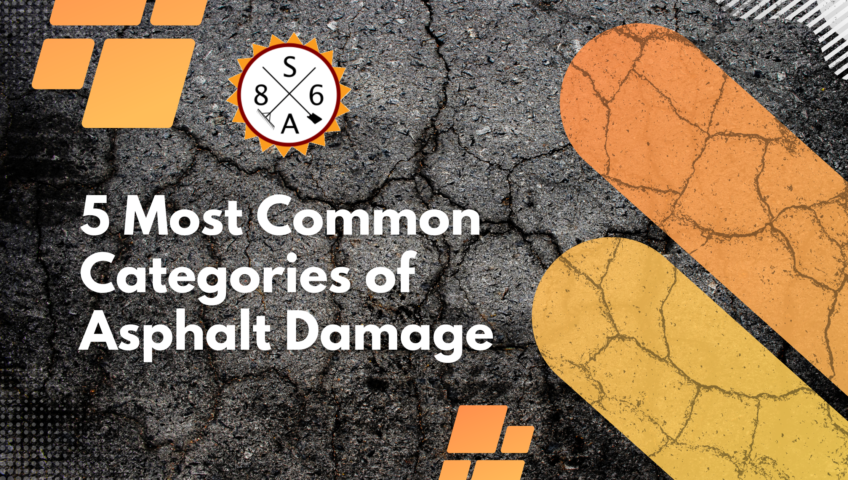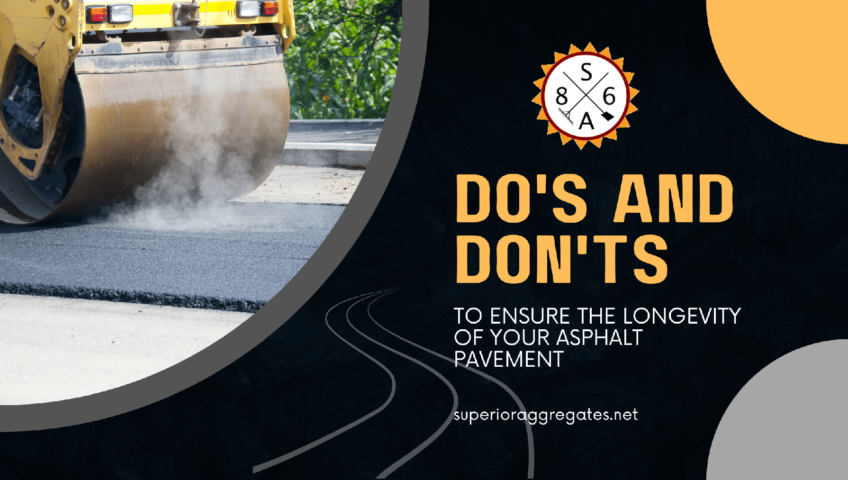
5 Most Common Categories of Asphalt Damage
Asphalt is known for being one of the most versatile pavement materials. Most people choose asphalt for its durability, and you might also enjoy how smooth the material looks on large surfaces. While asphalt parking lots and other types of surfaces should last anywhere from 10 to 15 years, they do require some maintenance to reach their maximum life span. Watching out for these common types of asphalt damage helps you know when to arrange for repairs.
Cracking
Cracks can develop due to severe weather conditions, wear and tear from heavy traffic along with poor drainage. There are several different types of cracks that you might notice in the asphalt, and noting which kind you see can help asphalt companies determine the cause of the damage. For example, fatigue cracks involve lots of small ones that run together and create the appearance of an alligator’s skin. These tend to come from chronic excessive loads or poor drainage in a climate with frequent temperature changes. Meanwhile, linear cracks could be caused by general wear and tear.
Depressions
Kids may love how depressions in asphalt surfaces create the perfect puddles, but road maintenance crews know just how dangerous these can be for causing skids. If a depression is relatively shallow and small, then it might only need a surface patch repair. However, some of these can get pretty large, which means you might need to replace the paved area.
Potholes
Coming across a big one of these on a road can lead to popped tires and car accidents. Potholes are ultimately the end result of allowing alligator cracks to go without repairs. Over time, water gets into the cracks and starts to erode the asphalt. Eventually, the cracks begin to intersect and cause chunks to come out of the surface until there is a serious hole.
Rutting
Heavy traffic on asphalt drives can cause indentations to form where the vehicle tires constantly roll across the surface. Since rutting is caused by the surface layers getting compressed by the weight of the vehicles, it tends to be worse when there is already a flaw in the pavement, such as it being too thin or made from a weak asphalt mix. Failing to properly compact the material during the installation process is another reason why rutting might develop, which is why it is important to fully vet asphalt companies before you arrange for their services.
Raveling
Asphalt raveling is caused by the general deterioration of the surface. With raveling, the pieces of the material begin to dislodge, and you might see loose gravel coming up on the surface. On roads and parking lots, the surface can get quite rough, and the loose materials can increase the risk of skids. The good news is that raveling tends to affect just the top surface layer in the early stages, and you might only need to plan for an overlay to fix the problem. Keep in mind that having a loose top layer exposes the underlayers to more potential for damage, so you’ll want to correct the issue as soon as possible.
When caught early, many types of asphalt damage can be repaired before it requires a complete replacement of the surface materials. Whether you have an asphalt driveway, road or trail you’re in charge of maintaining, make routine checks for damage a normal part of your routine. Staying on top of the quality of the surface helps to keep people safe and preserve the appearance of your property.
Asphalt is known for being one of the most versatile pavement materials. Most people choose asphalt for its durability, and you might also enjoy how smooth the material looks on large surfaces. While asphalt parking lots and other types of surfaces should last anywhere from 10 to 15 years, they do require some maintenance to reach their maximum life span. Watching out for these common types of asphalt damage helps you know when to arrange for repairs.
Cracking
Cracks can develop due to severe weather conditions, wear and tear from heavy traffic along with poor drainage. There are several different types of cracks that you might notice in the asphalt, and noting which kind you see can help asphalt companies determine the cause of the damage. For example, fatigue cracks involve lots of small ones that run together and create the appearance of an alligator’s skin. These tend to come from chronic excessive loads or poor drainage in a climate with frequent temperature changes. Meanwhile, linear cracks could be caused by general wear and tear.
Depressions
Kids may love how depressions in asphalt surfaces create the perfect puddles, but road maintenance crews know just how dangerous these can be for causing skids. If a depression is relatively shallow and small, then it might only need a surface patch repair. However, some of these can get pretty large, which means you might need to replace the paved area.
Potholes
Coming across a big one of these on a road can lead to popped tires and car accidents. Potholes are ultimately the end result of allowing alligator cracks to go without repairs. Over time, water gets into the cracks and starts to erode the asphalt. Eventually, the cracks begin to intersect and cause chunks to come out of the surface until there is a serious hole.
Rutting
Heavy traffic on asphalt drives can cause indentations to form where the vehicle tires constantly roll across the surface. Since rutting is caused by the surface layers getting compressed by the weight of the vehicles, it tends to be worse when there is already a flaw in the pavement, such as it being too thin or made from a weak asphalt mix. Failing to properly compact the material during the installation process is another reason why rutting might develop, which is why it is important to fully vet asphalt companies before you arrange for their services.
Raveling
Asphalt raveling is caused by the general deterioration of the surface. With raveling, the pieces of the material begin to dislodge, and you might see loose gravel coming up on the surface. On roads and parking lots, the surface can get quite rough, and the loose materials can increase the risk of skids. The good news is that raveling tends to affect just the top surface layer in the early stages, and you might only need to plan for an overlay to fix the problem. Keep in mind that having a loose top layer exposes the underlayers to more potential for damage, so you’ll want to correct the issue as soon as possible.
When caught early, many types of asphalt damage can be repaired before it requires a complete replacement of the surface materials. Whether you have an asphalt driveway, road or trail you’re in charge of maintaining, make routine checks for damage a normal part of your routine. Staying on top of the quality of the surface helps to keep people safe and preserve the appearance of your property.

